Burnley Tree Surgeons (BB11): Trees are wonderful things to have and enjoy in our gardens - they offer welcome shade on hot, sunny days, they provide a much needed home for birds and wildlife and they produce vital oxygen for our environment. But, to balance the good stuff about trees, there are also downsides. Trees can get damaged by storms and wind. Trees can become far too big for our gardens in Burnley. Trees can get diseased and unstable. If concerns are growing about your trees in Burnley, a tree surgeon is the person to contact.
Tree surgeons in Burnley play a vital role in the general care and maintenance of trees for a wide selection of both private and public customers. A trained tree surgeon in Burnley may be able to provide the pruning of weakened, intruding or dead branches, tree felling and removal, hazard assessments and inspections, the safe planting of trees, together with general tree care, to name but a few examples.
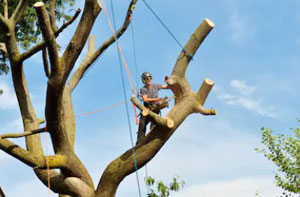
However, a tree surgeon's work does not stop with trees alone. Additional duties of a tree surgeon in Burnley can include hedge maintenance, pruning and care and stump removal. If you have any reservations about a tree's structural integrity, the best person to get in touch with is a tree surgeon, as they can quickly assess and give a report on potential hazards, and offer guidance on what should be done next.
Because it is such a risky business, tree surgery is unquestionably something that should only be completed by a professionally trained person. Although it may seem tempting to forgo the costs and go for the DIY approach, it would definitely not be the smartest decision to make. So as to carry out this sort of task, tree surgeons need to be experienced, physically fit and qualified.
Tree surgery often involves the use of dangerous chainsaws and power tools whilst elevated in the air and swinging from a harness in a tree. Amateurs beware - this is most certainly not a task for you! A gang of professional tree surgeons is normally needed to carry out a tree surgery project, and will include both climbers and a ground crew, who are all experts in what they do. An untrained individual would find it nigh on impossible to complete the work with anything close to this level of risk assessment, experience and competence.
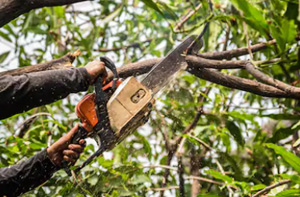
The initial step following establishing you need the assistance of a tree surgeon is obtaining a trustworthy one in Burnley. But, how? Well, there are a few things you need to check, for instance qualifications and costs. Below, we will be looking at just some of the things that you should look for when employing a tree surgeon in Burnley.
The initial step will be to check whether that they've got the appropriate qualifications, this should give you the peace of mind that they're competent and correctly trained. The main governing body that issues accreditations to tree surgeons is the National Proficiency Tests Council (NPTC). At the bare minimum, any professional tree surgeon in Burnley should have the following accreditations:
- NPTC 206/306 (CS38) - Climb a tree and carry out aerial rescue.
- NPTC 203 (CS31) - Fell & process small trees.
- NPTC 308 (CS39) - Usage of a chainsaw from a rope and harness.
- NPTC 201/202 (CS30) - Chainsaw maintenance and crosscutting.
Because holding such qualifications shows that they've received the appropriate training, it is worthwhile finding a tree surgeon who has them, although this is not currently a legal obligation. Gaining these certifications should give you the peace of mind that the job will be completed safely and successfully. It is also crucial that arborists, forestry workers and tree surgeons do some basic First Aid training, and they should always carry a comprehensive First Aid kit in accordance with HSE workplace recommendations.
Next, check the breakdown of the costs and ask 3 or 4 tree surgeons in Burnley to get different price quotes for the tree surgery work. In some cases, the estimated cost won't include the removal and disposal of the considerable amounts of waste normally generated by tree surgery. It is certainly preferable to have the tree surgeons remove this waste themselves if possible, as removing such waste can be extremely inconvenient and costly.
Also, when chatting to prospective tree surgeons in Burnley, ensure that you're ready to ask a number of key questions regarding your requirements. You will, for example, need to know who's going to be doing the job, and who'll be working on your property. Is it possible to meet with them in advance? Will it involve a team or an individual? What's the timeframe for the work? What tree surgery or removal techniques is going to be used on the tree? Will my home or next door neighbours be impacted?
Do not be afraid to ask all these questions, as the more you ask, the less likelihood that there will be any nasty surprises further down the road.
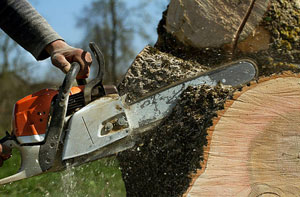
Lastly, listen closely to your tree surgeon. In particular, listen carefully to how they describe the work, because this can be helpful for assessing their standards of expertise and professionalism prior to the commencement of any work. If the phrase 'topping and lopping' is mentioned, you might be better off looking for a different tree surgeon, because this is a fairly old-fashioned phrase, which indicates a definite absence of modern tree surgery knowledge. Terminology like 'pruning', 'pollarding', 'thinning', 'crown lifting' and 'crown reduction', will be what you hear from a fully trained, professional and experienced tree surgeon in Burnley. While merely using the correct phrases is not invariably an indication of a tree surgeon's ability, it can give helpful clues about a person's measure of expertise.
At the end of the day, when it comes to tree surgery or tree maintenance, it is always worth the effort of contacting a variety of different tree surgeons in Burnley. Consequently, you should get a job that is skillfully undertaken, meets all your requirements and complies with all the appropriate health and safety measures.
Local Burnley tree surgeons are likely to have the postcode BB11 and the telephone dialling code 01282. They'll work in Burnley itself, along with nearby areas like Nelson, Reedley, Brierfield, Huncoat, Rose Hill, Higham, Fence, Worsthorne, Cornholme, Briercliffe, Crawshawbooth, Hapton, Lowerhouse, Padiham, Pike Hill, and these postcodes: BB10 1EG, BB10 1BE, BB10 1SQ, BB10 1SF, BB10 1BA, BB10 1AW, BB10 1UA, BB10 1SW, BB10 1SZ, BB10 1BZ. Checking this can ensure that you are accessing a local tree surgeon. Burnley property owners can utilise these and various other comparable services.
If you need this kind of service it is definitely best to use a competent tree surgeon. Burnley home and business owners can benefit greatly from the expertise and knowledge that are the trademark of a seasoned professional.
A Tree Surgeons's Day to Day Duties
- Deal with customers and complete administration tasks.
- Fell and remove trees and grind stumps.
- Assess the health of trees and create treatment plans.
- Prepare telephone or on-site price quotes with the customers.
- Identify hazards presented by trees.
- Maintain and service equipment like chainsaws and chippers.
- Tree planting and transplanting.
- Clean up site upon completion and remove waste products from customer's site.
- Chip and cut logs and branches.
- Produce tree survey reports for both domestic and commercial clients.
- Climb trees to prune or remove branches as required.
- Be adept with power tools and powered equipment.
Dutch Elm Disease
A fungal disease which has killed millions of precious elm trees right through the United Kingdom during the last 50 years or more, Dutch Elm Disease (Ophiostoma novo-ulmi) isn't quite the concern that it was at one time. Spread by the elm bark beetle (particularly the Scolytus genus) and caused by the Ophiostoma novo-ulmi fungus, Dutch Elm Disease (DED) was accidentally introduced into the British Isles from North America (Canada) in the Sixties.
After its arrival, it was rapidly spread through the nationwide movement of elm products such as bark mulch, elm crates, saplings, and firewood logs with the bark on. Believed to have originated from Asia, Dutch Elm Disease did not just affect trees in the UK, but also devastated the stocks of elm trees in mainland Europe and North America.
DED generally first appears in early summer, and the main signs are:
- A "shepherd's crook" reaction on affected twigs.
- Clusters of leaves turning yellow, wilting and falling.
- New shoots that die back from the tips.
- Twigs with rings or spots in cross-section.
Due to disease and the felling of dead, infected and dying trees, there are not many large elms surviving in Great Britain's countryside, therefore the spread has slowed down and the beetle's habitat essentially decimated. The propagation of young saplings which are so far resistant to DED is a continuing project.
You can contact your local tree surgeon for advice, if you suspect you might have infected elm trees in your garden in Burnley, or you could ask for a diagnosis from the THDAS (Tree Health Diagnostic & Advisory Service), for which you will be charged.
Trees affected - Ulmus and Zelkova.
Agent of spread - beetles of the Scolytus and Hylorgopinus genera.
Cause - fungi Ophiostoma Novo-Ulmi and Ophiostoma Ulmi.
(Tags: Dutch Elm Disease Burnley, Signs of Dutch Elm Disease, Spotting Dutch Elm Disease).Storm Damaged Trees Burnley
At first glance, trees seem sturdy, strong and capable of withstanding just about anything that Mother Nature can throw their way. In actual fact certain types of trees can live and continue to grow for many hundreds of years and happily do so without any problems.
Despite all of this, trees are certainly vulnerable to adverse weather conditions, and aside from the risk of falling limbs and branches, when faced with a certain set of conditions trees may also fall over completely, causing untold damage or even death. Trees have got one main weather related enemy, and that is wind. As extreme weather events and severe storms become more and more common with climate change, this type of damage will happen with greater regularity in Burnley. Other problems can be heavy snow during winter, and saturated soil during flooding or extended periods of rainfall.
To prune and remove any dead or excessively long branches that might cause an issue in times of severe weather, it's a good idea to get a certified Burnley tree surgeon to examine your trees regularly.
To prevent larger trees being struck by lightning, and to safeguard nearby property and buildings which may be vulnerable to side-flashes ("arcs"), it's also a good idea to install copper conductors, lightning rods, or other lightning protection systems. Trees can be damaged, severely weakened, or even killed by lightning strikes, they can be burned to the ground, split down the middle, or left susceptible to pests, disease or decay - not the happiest of situations! Lightning occurs more frequently than you may think, and there are something like 300 thousand strikes each year in the UK alone.
To safeguard your trees from being damaged by storms and minimise the chances of severe consequences should an unsound tree crash down as a result of extreme weather, ask your local Burnley tree surgery firm what they can do.
Invasive Tree Roots Burnley

Because certain trees have exceptionally invasive root systems, if they're growing too close to your home in Burnley, they can trigger a number of issues, possibly serious. Cracked patios, damaged foundations and blocked drains, are some of the most commonplace problems that you may run across. Some of the tree species that have extremely intrusive root systems include willows, sycamores, maples and elms.
Complications can be avoided later on, if you ensure that you plant new trees as far as possible away from patios, your home, your drainage pipes and pathways. If you've already got problems with pre-existing trees which are growing too close to your house, you can get advice and help by contacting a local Burnley tree surgeon.
If you want to avoid the possibility of killing off the tree or seriously affecting it's health you really should not try and do this yourself and simply cut out any problematic tree roots. An experienced tree surgeon in Burnley will know exactly which roots should be left, and which roots can be cut, so any damage to property is reduced, but the tree can still get adequate nutrients and water to survive and thrive.
Given that sewerage pipes provide a consistent source of water and nutrients, tree and shrub roots often cause cracks in subterranean drains. The joints of a drainage system can easily be invaded by minute tree roots, which when established can grow into huge root balls and eventually cause blockages and joint failure. To get rid of the roots that are causing the problem, specialised root removal services will be offered by many local tree surgeons, who will use mechanical equipment, manual rod clearance or high pressure water jetting. Invasive root removal services are also available in Nelson, Reedley, Brierfield, Huncoat, Rose Hill, Higham, Fence, Worsthorne, Cornholme, Briercliffe, Crawshawbooth, Hapton, Lowerhouse, Padiham, Pike Hill, and and of course in Burnley.
Air-Spading Burnley
When a tree's health is causing you some concerns, this might be due to any number of issues, but is quite often because of problems with the root system. Easy access to the roots of your tree is essential for a local Burnley tree surgeon to check for soil compaction, root rot and other potential issues.
Because there's a high probability of causing damage to the roots during the digging process, during the past this was somewhat problematic to achieve. To effectively break down and remove compressed soil without damaging tree roots or utilities, a modern day system which is often used is "air spading".
The general health of a tree can be affected when the soil around the roots becomes compacted by heavy foot traffic, construction work or passing vehicles. A tree can become "stressed" due to a lack of nutrients and water, which renders it more vulnerable to attacks by insects, disease and pests. Root flare problems can also be tackled with air-spading, and this is when the flare around the base of the trunk becomes covered with soil, heightening the likelihood of root rot by causing the tissue to break down.
Blowing air directly into the soil at a speed of 1,200 mph, the air-spading process involves the use of an air-spade tool and an air compressor which forces air into spaces in the soil, causing it to break up instantly, but not impacting the tree roots or utilities. As surrounding soil is directed away from the tree's roots by the powerful air flow, immediate inspection is possible. The soil can then be replaced with a looser layer of wood mulch and fertiliser to encourage the tree to revive, and rectify any problems.
Eco-Plugging Tree Stumps Burnley
If you've got large stumps in your garden that need to be removed, the common method used by most Burnley tree surgeons is stump grinding. However, these days "eco-plugging" is touted as a more cost-effective solution to this issue. Not only is this method less costly, it can also be used where stump grinding accessibility issues exist, in awkward and hard-to-reach locations.
Eco-plugging is a highly effective treatment for killing tree stumps and has no effect on any nearby vegetation and trees. Eco-plugs destroy the entire root system of the tree stump and can be employed throughout the year and in any weather conditions. Effective for treating a wide array of trees, eco-plugs are 95% to 100% effective and contain a form of granular glyphosate herbicide.
Tree Surveys Burnley
Tree surveys might be required for various reasons, but the most common is when property extension or development is taking place. If you are clearing some land to prepare for the building of an extension to an existing property or a brand new home in Burnley, for example, you may need to carry out a tree survey to BS5837 British Standards if there are trees growing on that land. Burnley tree surveys on both private and public property, should be conducted by an accredited tree surveyor or tree surgeon.
A whole bunch of information about all the trees within a specified area will be produced by a properly done tree survey. For example:
- The ages of the trees.
- The predicted life expectancy of the trees.
- The diameter of each tree (measured 1.5m above the ground).
- The species of trees on the site.
- The number of trees.
- The allocation of a unique tree reference number for each tree.
- The branch spread to North, East, West and South.
- Preliminary tree management advice.
- The physiological and structural health of the trees.
- The height of each tree in metres.
- The existence of any TPOs (Tree Preservation Orders).
A tree survey probably won't be required if you are not changing the footprint of the property and are not changing the access points or service lines of an existing property or home in Burnley.
TPOs (Tree Preservation Orders) Burnley
Before performing any serious work on your trees in Burnley, you must make certain none of them have Tree Preservation Orders (TPOs) You local authority is the place to go to find out if there are any Tree Preservation Orders on your trees. A Tree Preservation Order prevents the removal, lopping, topping, uprooting, cutting down, wilful destruction or wilful damage of any tree that's protected. Your tree surgeon should be able to explain the process and help you with any checks.
Also, if you plan to perform any work on a tree with a diameter of seventy five millimetres or more (1.5m from ground level), and you reside within a conservation area in Burnley, you need to give your local planning authority at least 6 weeks written notice of the work.
Woodland Clearance Burnley
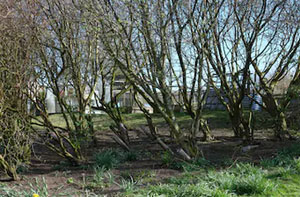
The clearance of woodlands in the Burnley area is a delicate process that can be affected by a number of restrictions and regulations. To ensure all relevant permits are gathered, restrictions and land covenants are enforced, and that all methods of completing the clearance are environmentally sound, an experienced Burnley tree surgeon should be recruited to manage and undertake the project.
A professional company will liaise with local and national woodland organisations and authorities and conduct an extensive survey of the site. It could be that the land in question has got protected tree species or animals upon it, which will require relocation to another protected site, or other mitigation strategies to be employed.
It will be far more cost effective to hire a professional Burnley tree care company to carry out your clearance project, because the chipping, felling and mulching equipment that's needed is extremely pricey.
Protecting Trees in Winter
While you may not believe that the weather in the UK is severe enough to justify protecting your trees and shrubs, it may be a good idea to take another look at this. Even the shrubs, trees and plants that we normally consider to be hardy, can find winter hard to get through, particularly during the colder winter months, and they will always benefit from a bit of TLC and extra protection.
Storms and strong winds can be the biggest problem when trees are involved, and although most of your trees will have shed all their leaves come winter, they might still be susceptible in severe conditions. If you have a tree in your garden that looks like it may be weakened, or shows signs of crashing to the ground, you'll want to get it checked out by a local tree surgeon, who can offer guidance and advice. Heavy snow can also lead to broken branches, so stay alert when this type of weather arrives. In the depth of winter, your shrubs and trees might need a bit of protection from frost and ice. Laying a thick covering of mulch round the bases of the stems will enable them to absorb moisture and prevent the surrounding soil from freezing.
Ash Dieback
Likely to devastate close to 80% of the current British ash trees, over the coming years, ash dieback (Hymenoscyphus fraxineus) is a chronic fungal disease of ash trees, the first case of which was documented in Britain in 2012. Ash dieback is almost certain to have a huge impact on our beloved countryside, contributing to the damage resulting from the earlier Dutch Elm Disease (DED) crisis.
Ash dieback has a particularly devastating effect on the native Fraxinus excelsior (common ash), British Fraxinus excelsior (common ash), although it affects all trees of the Fraxinus genus, which have varying degrees of tolerance to it. The fungus which causes ash dieback is named Hymenoscyphus fraxineus (H. fraxineus), and it originated in Asia.
Dispersed by tiny spores that blow on the wind, which are produced by the fruiting bodies of the fungus, and are able to travel for tens of miles, ash dieback has already spread to most parts of the United Kingdom.
Killing tree of all ages, ash dieback can be recognised by symptoms such as:
- Dying shoots and leaves which are visible during the summertime.
- Dark brown lesions form where limbs connect to trunk.
- Leaves that develop dark patches during mid to late summer.
- New growth appears from previously dormant buds.
- Wilting leaves that turn black in colour and fall prematurely.
Ash trees are able to fight off the disease to some degree, but sooner or later die from continual attacks. Since it's an airborne disease there's no obvious technique for stopping its spread, and no effective cure for ash dieback.
If you suspect a tree in your local area is contaminated with ash dieback, or you're nervous about a tree on your property in Burnley, you should bring in a local tree surgeon to verify the diagnosis, and you can also send in a report to the Forestry Commission's "Tree Alert Service", although they are now only interested to know about cases in areas that were previously unaffected.
Coming Soon: Tree pruning Burnley.
Leaving a Review for a Job Well Done
For any business in Burnley, reviews are their driving force, and the difference between a prospective customer choosing a particular company, or moving on to a competitor, can be whether they have good online reviews or not. If the tree surgeon you hired provided a high quality service, you ought to reward their efforts by leaving an enthusiastic review. Sharing your personal experience in this manner can help both the company itself and any possible clients in the future. You should think back to how reading through reviews helped you when you were looking for somebody to do your tree surgery. It doesn't really matter how outstanding a certain company's website looks, you might well have looked elsewhere if there were no positive reviews to back it up.

However, when you're on a company's own website, exactly how much reliance can be put on reviews that you see? They may have been "conjured up" by an employee of the company, trying to make their services look better, or were they composed by "real" people?
The best way to search for honest and authentic reviews is to check out the Google My Business reviews. For determining a business's reputation and also influence a business's ranking in search engines, few would argue that this is THE review website. The 2nd biggest review website for local companies in Burnley is Bing Places for Business, and this is undoubtedly the leading rival to Google My Business. A rundown of the dependability and working standards of a company that worked successfully on your tree surgery project can be provided by leaving a review here, and at the same time you could help to raise their profile in Burnley. Company reviews could also be left on Facebook and Twitter pages, which are great spots leaving testimonials. These giants of social media will be a big part of any small company's advertising strategy. Adding in your own favourable reviews on Twitter or Facebook will help reinforce their marketing message, and probably generate more customers.
Those of you who prefer to go 'old school' can obviously send in a hand-drafted thank you letter instead. These are still useful in an online world and can be scanned in for use on websites, or even framed or gathered together to create a portfolio of reviews for use in one on one meetings with prospective customers. The incentive for you is the amazing feeling that you will get, knowing that you've in some way helped a local small business get a foothold in a highly competitive marketplace and hopefully gain more clients.
Tree Surgery Tasks Burnley

Burnley tree surgeons can generally help with tree care services Burnley, safety inspections, tree reduction, tree topping in Burnley, emergency tree removal, damage restoration in Burnley, retrenchment pruning, tree pest management, stump removal, health assessments in Burnley, root flare exposure Burnley, woodland clearance, tree staking, crown lifting Burnley, domestic tree surgery, the protection of trees from grazing, dead wooding, tree removal, crown removal Burnley, tree bracing, root removal in Burnley, tree fertilising, tree planning Burnley, hedge reduction, hedge lowering in Burnley, commercial tree care, tree lightening protection, waste removal, drop crotching, landscaping, hedge trimming in Burnley, air spading, root pruning in Burnley, tree waste removal Burnley, landscape clearance and other tree surgeon services in Burnley, Lancashire. These are just some of the duties that are performed by a local tree surgeon. Burnley professionals will be delighted to keep you abreast of their whole range of services.
Tree Surgery Training - Courses - Apprenticeships Burnley

Having a career in tree surgery is a fulfilling and rewarding means by which to earn a living. There are various ways that you can start a career in tree surgery including applying for a college course, taking a course in university, commencing at the bottom (maybe as a groundworker) and working towards this goal, signing up for a private course or being accepted into a tree surgery apprenticeship. When they are available locally, tree surgery apprenticeships in Burnley can be applied for whilst still at school. All over Great Britain, there are private and college courses in tree surgery, and people of any age can apply. People with the appropriate qualifications (typically 1 to 3 "A" levels) can go for higher national diplomas, foundation degrees and degrees at university, in any one of the various related fields such as forest management, arboriculture, forestry, woodland ecology & conservation and countryside management. Finally, you might be able to get a bit of tree surgery experience by volunteering for the Tree Council, the Forestry Commission, the Woodland Trust or the National Trust, each of who often have positions available. This paragraph was produced to assist anybody trying to learn "how to become a tree surgeon in Burnley", hopefully it has helped you learn what you wanted. You can view a lot more guidance on how to become a tree surgeon by visiting the National Careers Service website.
Tree Surgeons Near Burnley: Also find: Higham tree surgeons, Reedley tree surgeons, Fence tree surgeons, Cornholme tree surgeons, Crawshawbooth tree surgeons, Nelson tree surgeons, Briercliffe tree surgeons, Lowerhouse tree surgeons, Padiham tree surgeons, Huncoat tree surgeons, Rose Hill tree surgeons, Worsthorne tree surgeons, Hapton tree surgeons, Pike Hill tree surgeons, Brierfield here. Most of these locations are covered by a tree surgeon. Burnley home and property owners can get tree surgery estimates by going here.
Tree Surgeons Around Burnley: Tree surgeons were recently doing work in the following Burnley locations: Clockhouse Avenue, Dean Street, Stainton Drive, Cemetery Road, Denbigh Grove, Craven Street, Adamson Street, Springfield Road, Cog Lane, Brockenhurst Street, Stone Moor Bottom, Duckett Street, Stafford Street, Sutton Avenue, Burleigh Street, Sunnyfield Avenue, Balderstone Close, Stephenson Drive, Bartle Street, Athol Street North, Shay Lane, Saxifield Street, Badger Close, Deerpark Road, Sabden Road, Barnfield Avenue, Cemetery Lane, Bank Terrace, Shap Grove, and in households with these postcodes: BB10 1EG, BB10 1BE, BB10 1SQ, BB10 1SF, BB10 1BA, BB10 1AW, BB10 1UA, BB10 1SW, BB10 1SZ, BB10 1BZ. Work was achieved in these locations by a certified tree surgeon. Burnley homeowners benefited from dependable and high quality tree surgery services in every case.
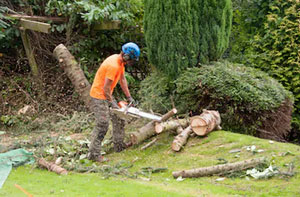 Tree Surgeon Burnley
Tree Surgeon Burnley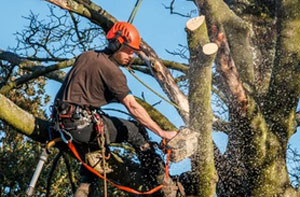 Tree Surgeons Burnley
Tree Surgeons Burnley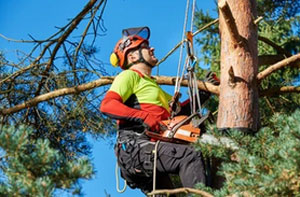 Tree Surgery Burnley
Tree Surgery BurnleyTo find local info regarding Burnley, Lancashire check here
More Lancashire Tree Surgeons: Lancashire tree surgeons: Clitheroe, Preesall, Tarleton, Livesey, Heysham, Carnforth, Poulton, Bacup, Farington, Fulwood, Bamber Bridge, Kirkham, Blackpool, Clayton-le-Moors, Up Holland, Adlington, Bispham, Darwen, Morecambe, Burnley, Euxton, Skelmersdale, Preston, Leyland, Barrowford, Ormskirk, Penwortham, Lancaster, Barnoldswick, Clayton-le-Woods, Fleetwood, Great Harwood, Haslingden, Earby, Nelson, Poulton-le-Fylde, Padiham, Chorley, Freckleton, Blackburn, Appley Bridge, Colne, Rawtenstall, Longridge, Rishton, Lytham St Annes, Helmshore, Brierfield, Whitworth, Thornton Cleveleys, Garstang, Burscough, Aughton, Oswaldtwistle, Accrington and Coppull.
Tree Surgery BB11 area, 01282.
More Trades: Gate Fitters - Gutter Cleaning - Tilers - Carpet Fitters - Carpenters
Tree Surgeon Burnley - Arboriculturalist Burnley - Tree Surgery Burnley - Vegetation Control Burnley - Crown Lifting Burnley - Tree Surgeon Near Me - Stump Removal Burnley - Tree Surgeons Burnley - Tree Management Burnley





